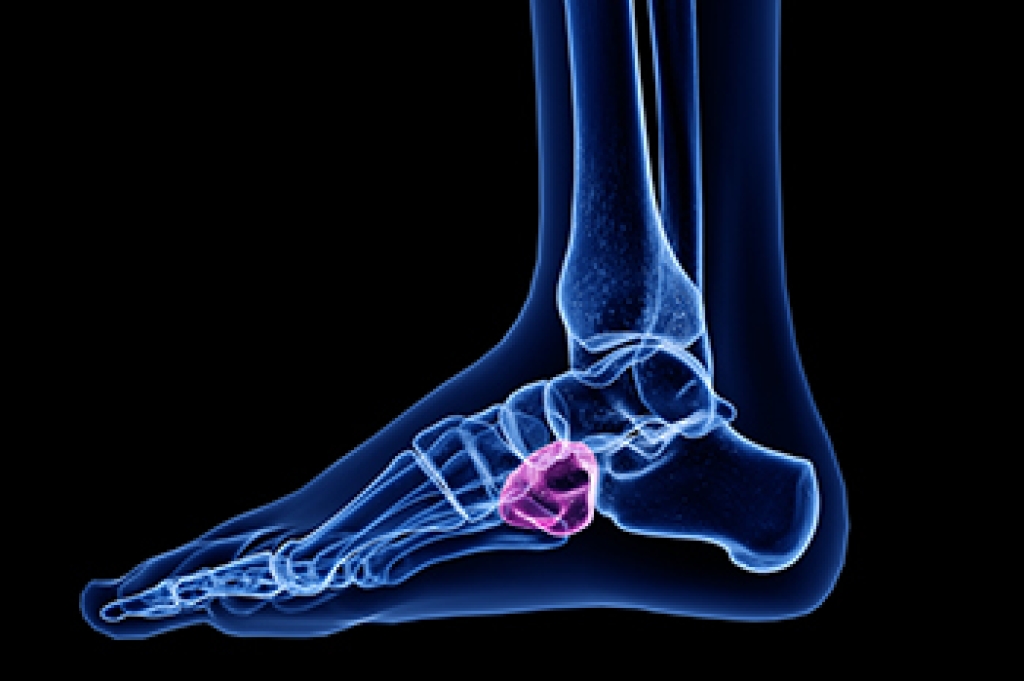
The cuboid bone is a small, cube-shaped bone on the outer side of the foot between the heel bone and the 4th and 5th metatarsal. It helps provide stability and supports weight during movement. Cuboid syndrome occurs when this bone becomes partially dislocated or misaligned, leading to pain and difficulty walking. Symptoms include aching on the outer foot, swelling, and reduced range of motion. Causes can involve overuse, ankle sprains, improper footwear, or repetitive strain. Risk factors include flat feet, high arches, and participation in sports with sudden directional changes. A podiatrist can diagnose cuboid syndrome, realign the bone, provide supportive taping, and recommend a change in footwear or custom orthotics. If you have persistent outer foot pain, it is suggested that you consult a podiatrist who can accurately diagnose and treat what might be going on.
Cuboid syndrome, also known as cuboid subluxation, occurs when the joints and ligaments near the cuboid bone in the foot become torn. If you have cuboid syndrome, consult with Shalonda Davidson, DPM from Instride Carolina Foot Care. Our doctor will assess your condition and provide you with quality foot and ankle treatment.
Cuboid syndrome is a common cause of lateral foot pain, which is pain on the outside of the foot. The condition may happen suddenly due to an ankle sprain, or it may develop slowly overtime from repetitive tension through the bone and surrounding structures.
Causes
The most common causes of cuboid syndrome include:
- Injury – The most common cause of this ailment is an ankle sprain.
- Repetitive Strain – Tension placed through the peroneus longus muscle from repetitive activities such as jumping and running may cause excessive traction on the bone causing it to sublux.
- Altered Foot Biomechanics – Most people suffering from cuboid subluxation have flat feet.
Symptoms
A common symptom of cuboid syndrome is pain along the outside of the foot which can be felt in the ankle and toes. This pain may create walking difficulties and may cause those with the condition to walk with a limp.
Diagnosis
Diagnosis of cuboid syndrome is often difficult, and it is often misdiagnosed. X-rays, MRIs and CT scans often fail to properly show the cuboid subluxation. Although there isn’t a specific test used to diagnose cuboid syndrome, your podiatrist will usually check if pain is felt while pressing firmly on the cuboid bone of your foot.
Treatment
Just as the range of causes varies widely, so do treatments. Some more common treatments are ice therapy, rest, exercise, taping, and orthotics.
If you have any questions, please feel free to contact our office located in Statesville, NC . We offer the newest diagnostic and treatment technologies for all your foot care needs.




